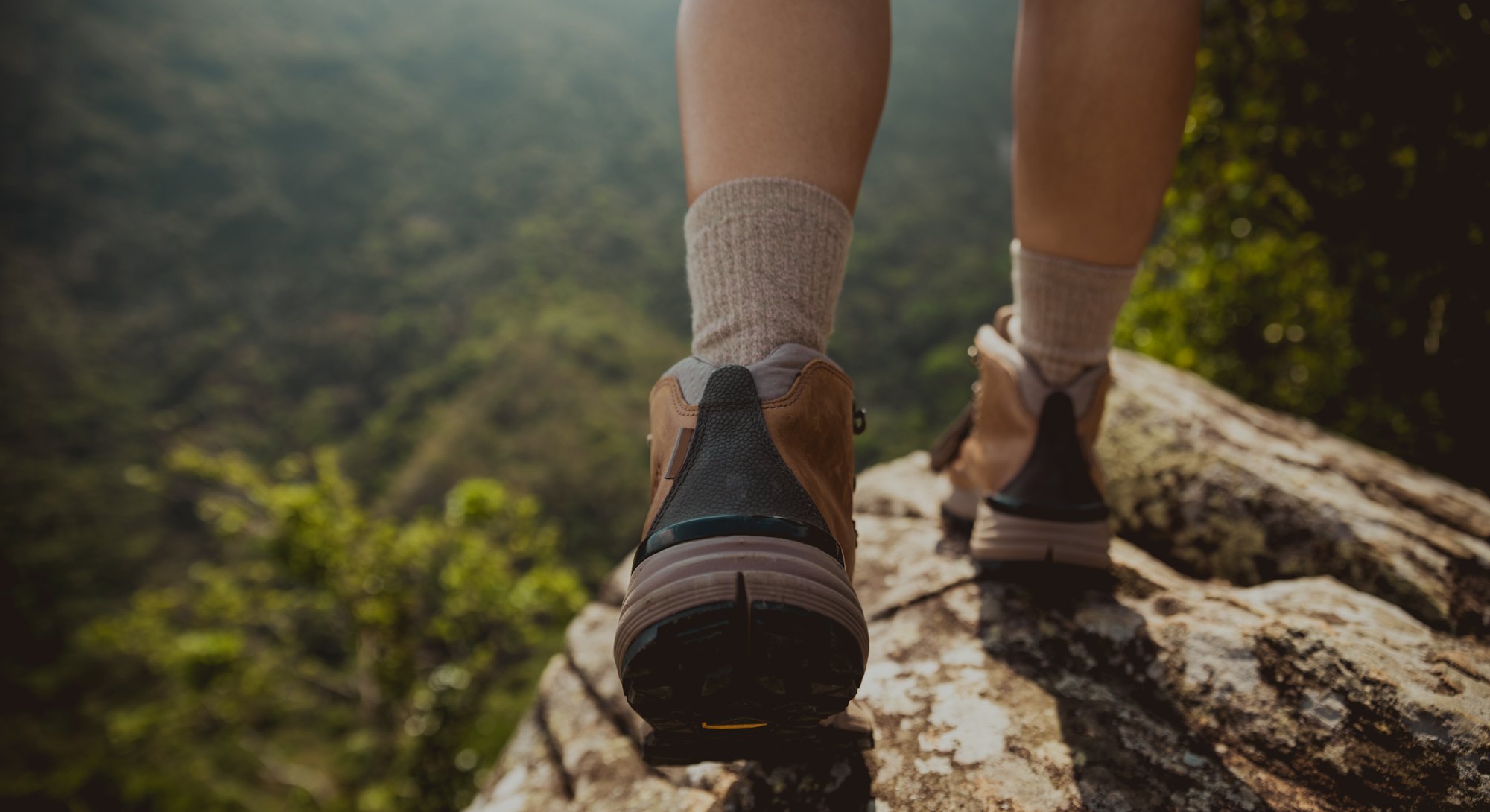I completed the Cross Borneo Trek in 2015. Four Dayak men led us through the muddy jungle, over the Muller Mountains and across the Mahakam River (multiple times); one of them barefoot. When asked how he managed such a thing, he replied, “I just know how to walk”. The majority of us require some footwear when trekking, though. I wore a pair of Lowa hiking boots — not the optimum choice as they slipped in mud (the lugs on the soles were too shallow) and on wet boulders.
📷: Vanessa Nirode
One of the main differences between trail running and hiking shoes is midsole construction, the latter having a stiffer midsole.
Most commonly made of either EVA ethylene vinyl acetate (EVA) or polyurethane (PU) foam, a shoe’s midsole absorbs the impact of whatever you’re walking on. A stiffer midsole provides more cushion from sharp, rocky, and uneven surfaces.
Merrell Moab 2 Vent
Survey results conducted by Halfway There revealed that the highest rated shoe of 2020 Pacific Crest Trail thru hikers was the Merrell Moab 2 Vent.
At $100.00, they’re a reasonably priced shoe that rates highly for both durability and comfort — which is probably why they are one of the most recognizable shoes in hiking communities.
$100 at Merrell
According to science, the lighter the shoe, the less fatigued you will feel over time. Some research states that one pound off a hiker’s feet is equal to five pounds off their pack.
The caveat to this is (of course) if your shoe is excessively lightweight it’s likely compromised in the durability or stability departments. Like many things in life, you need to determine your own balance of various properties to achieve the “just right” shoe.
The Altra Running Lone Peak
The Altra Running Lone Peak is one of the best trail running shoes available. I’ve owned a couple pairs of Lone Peaks and have traversed many trails in varying terrain. They're incredibly grippy on dirt, rock, sand, mud, and even snow.
And they have laser cut drainage holes so water doesn’t pool in shoe bottom.
$130 at Altra
So, about waterproof versus breathability: for most people, when hiking in warm, prolonged wet conditions, footwear with a mesh upper that allows maximum air permeability is preferable to waterproofness.
Waterproof fabrics aren’t breathable enough to keep up with the normal amount of foot perspiration that happens in such conditions.
Sportiva Nepal Evo GTX mountaineering boot
These "serious" mountaineering boots will keep your feet dry and warm when trekking across glaciers and in high elevations. My Nepal Evo’s carried me successfully and comfortably to the K2 base camp without suffering any significant bodily injury.
$525 at Sportiva
Shoe tread, or outsole traction works similarly to tire treads. Specific treads are more suitable for specific terrains. Look for something that will accommodate the type of surface you’ll be hiking most often.
Many shoemakers use rubber compounds made by Vibram for their soles. The softer the rubber is the stickier it will be. But, the softer it is the faster it will break down and the less durable it will be. Again, balance.
Shape, or rocker profile, of the shoe or boot sole makes a difference as well.
A rocker profile refers to how the shoe looks as it sits on the ground — the amount of curve in the sole. The curve can be in the toe or heel or both. The more the sole is curved or rockered, the more comfortable they tend to be stride-wise but (there is always a but) if a sole has too much rocker it will be more difficult to maintain good traction, especially on narrow ridges as less rubber will be in contact with the ground.
Heel brakes are a sole feature that does exactly what the name implies. A heel brake will (hopefully) dig into soft surfaces and help prevent excessive sliding and skidding. Heel brakes are a clearly defined zone distinct from the arch and forefoot. The Lowas I wore on my Borneo trek did not possess a heel brake which is why I spent so much time sliding and falling in the mud.
Most hiking shoes these days are made with synthetic fabrics such as mesh and polyurethane (PU) coated nylon, which adds a water resistant component to the shoe. A properly fitted hiking shoe shouldn’t require a “breaking in” period.
It’s a great idea to try new footwear on at the end of the day when your feet will be their most tired and swollen.
Laces that come loose or untied, or are difficult to cinch in tightly can be annoying and even (eventually) painful while trekking or hiking. I’ve always been a regular double knot, tuck the ends into the tongue person but there are also efficient lace system technology: like lock laces or using cord locks, clips, or dials which allow for a one pull tightening and a quick release.
